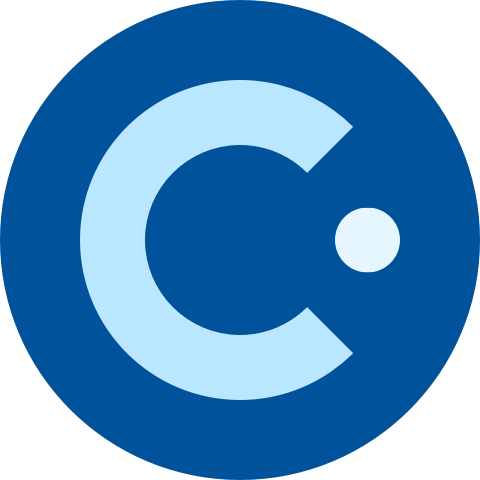Introduction
It is impossible not to hear the word “competitive advantage” thrown around in business meetings and corporate circles these days. As with any buzzword, the large number of people using it unduly, don’t understand it fully. A competitive advantage distinguishes a company from its competitors. It contributes to higher profit, more customers, and brand loyalty. Establishing such an advantage has always been one of the most important goals for any company. In today’s highly competitive world, it is not only sought after, but essential to business success. Gaining a competitive advantage isn’t easy, however, it becomes a little less complicated once you understand what it is, and how it can come about. In this article, we’ll help you understand what competitive advantage is, provide you with examples of competitive advantage from the real world, and also discuss ways to gain competitive advantage. Let us begin!
What is competitive advantage?

A competitive advantage is any attribute that enables an organization to outperform its competitors. As put forward by Forbes, your competitive advantage is your talent — the people doing the work — and their ability to innovate. In order to create a competitive advantage, an organization must offer its target market a clear benefit of buying from them, something which its competitors cannot provide. It goes without saying that a competitive advantage must be difficult, if not impossible, to replicate. If it is easily copied or imitated, it cannot be considered a competitive advantage. In short, a competitive advantage must provide customers with a value they need, one that nobody else can offer.
Let’s look at an example (consider this a bonus). In the early days of the internet, newspaper owners were slow to respond to the availability of free news online. They thought people would continue to pay for news delivered on paper once a day. By not staying up to date on the advancement and advantages of the internet, they allowed their competitive advantage to slip away. History is filled with businesses that shared a similar fate simply because they didn’t take new technology, and new competitors armed with that technology, seriously. Although newspapers are still read today, their target market has shrunk considerably, to include only those people (usually older) who aren't comfortable getting their news online. As for online news portals, they created a competitive advantage by offering news free, right into their target audience’s personal computers (and now laptops, mobile phones and tablets). Needless to say, they now dominate the news market.
Organizations need to stay up to date on the new trends that affect their product or service. In fact, they need to be closely attuned to their target market to create demand - the driver of all economic growth. They need to know exactly who their customers are and how they can make their lives better. This is where competitive intelligence comes in.
How competitive intelligence and competitive advantage are related

Competitive intelligence can provide companies with the necessary information to outsmart their competition and achieve a competitive edge. How? One, by helping organizations adapt to changes in their market and competitive environment, and two, by helping organizations build informed strategies and take informed decisions. In order to build a competitive advantage, an organization must be clear about three things:
1. The benefit(s) their product or service provides to their target audience. It must offer real value and generate interest.
2. Their target market. The organization must establish who is purchasing from the company and how it can cater to them.
3. Their competitors. It is important for the organization to have regular information on other competitors in the competitive landscape, and what they’re doing.
Doing this requires strategic management, and the whole point of competitive intelligence is to help organizations with strategic management. In a competitive marketplace like we have today, up-to-date information can make the difference between keeping pace, getting ahead, or being left behind. Competitive intelligence can serve as an early-warning system for disruptive changes in the market and competitive landscape, whether that change is a rival's new product or pricing strategy, the demand for a new type of product or service, or the entrance of an unexpected player into your market. All corporate maneuvers leave a trail, and your competitors’ moves are no different. It is simply a matter of knowing where to look, which is what competitive intelligence is all about.
Download M&CI Process Template
How can a competitive intelligence platform help your organization gain a competitive advantage?

A competitive intelligence platform or tool, is a software that helps businesses track information on competitors, customers, partners and industry segments by enabling users to collect, curate, and share actionable intelligence across their organization. Market and competitive intelligence solutions like Contify can help organizations transform their time-intensive and effort-consuming competitive intelligence process into a regular practice. This allows the organization to adjust pricing, introduce new products, discontinue products that competitors are now offering, and take other similar strategic decisions depending on the needs of their businesses, while regularly monitoring their market and competitors. Request a 7-day free trial of Contify’s Market and Competitive Intelligence Platform below:
It can help build a competitive advantage by offering the following benefits:
1. Competitive Intelligence Automation
Competitive intelligence systems allow organizations to automate repetitive, and time-consuming tasks like collection and organization of relevant information, which makes more time for analysis and actual decision-making. After sorting and filtering through all the irrelevant data, such CI solutions can compile key insights from each source into dashboards for easy data visualization. This simplifies the identification of impactful trends and shifts in your industry, making it easier for you to respond to them.
2. Centralized Knowledge Repository
Organizations underestimate the importance of having a tool that can help all their stakeholders access relevant information and insights from one centralized location. A common problem stakeholders face isn’t the lack of information, it’s the inability to find the relevant information at the right time, because it is buried somewhere they’ve long forgotten. There is also the problem of different stakeholders in an organization having different versions of the truth due to their exposure to divergent information, which makes it difficult to move strategically in one direction as an organization. A competitive intelligence system centralizes all the information it gathers from public sources, pulls information from premium tools or paid analyst reports you may have, and even integrates information from business intelligence tools your company may be using. This helps save time and effort spent in searching for information scattered across the organization, and creates a single source of truth for all stakeholders.
3. Knowledge Sharing and Collaboration
An organization has a large number of stakeholders, all of whom require different types and levels of information. A tool that can help streamline collaboration and knowledge sharing is a very handy thing to have. A competitive intelligence system can help you do that, with features such as sharing, commenting and tagging within the platform itself. This creates a single-source of truth for all your stakeholders, while also allowing CI administrators to push information out to teams in forms that are accessible, familiar, and relevant to their business function. For example, battlecards for sales teams, dashboards with analyses or charts for product teams, and reports for leadership/executives. In addition, tools like Contify can be integrated with the software tools that you use every day, providing you the power to sync all data, connect deeply into apps, and configure flexible workflows with clicks-or-code.
4. A Bird’s Eye View of the Market and Competitors
The primary reason organizations usually invest in a competitive intelligence solution is to track and monitor their markets and their competitors. However, that’s not all a CI solution can do. Advanced CI solutions like Contify, apart from all that’s mentioned above, can provide a bird’s-eye-view of competitors’ movements, help identify trends in marketing, promote strategic thinking and behaviour, provide intel on suppliers & key accounts, and help gain deeper insights at organizational, strategy, product, sales, and marketing levels. This allows these different business teams to function effectively in combating competitor movements, anticipate changes that could impact their business, and responding to market trends and shifts, allowing you to build a competitive advantage.
Now that you understand what a competitive advantage is, and how competitive intelligence can help you build one, without further ado, let us further understand competitive advantage by looking at some examples from the real world.
Real-world examples of competitive advantage
The term competitive advantage, in its true sense, was coined by Michael Porter in 1985, an American academic known for his theories on economics, business strategy, and social causes. He wrote about 4 generic strategies that companies undertake when it comes to competitive advantage, namely:
- Cost Leadership
- Differentiation
- Focus, which he subdivided into two parts:
1. Cost Focus
2. Differentiation Focus
Have a look at Porter’s matrix of competitive advantage in the image below:

Cost leadership can be achieved two ways: By increasing profits by reducing costs, while charging industry-average prices, and by increasing market share by charging lower prices, while still making a reasonable profit on each sale because you've reduced costs.
Differentiation can be achieved by: Good research, development and innovation, the ability to deliver high-quality products or services, and effective sales and marketing, so that the market understands the benefits offered by the differentiated offerings.
Focus strategies usually do not exist on their own, it is still essential to decide whether you will pursue Cost Leadership or Differentiation. Companies that use Focus strategies concentrate on particular niche markets and, by understanding the dynamics of that market and the unique needs of customers within it, develop uniquely low-cost or well-specified products for the market. The key to achieving Focus is to ensure that you are adding something extra as a result of serving only that market niche.
Although this model still has an important presence in Business and Marketing to this day, it is rather simplified. Nowadays, companies can build different competitive advantages based on factors that are not necessarily the mainstream. Let’s have a look at those:
1. Technology
Topping our list of modern examples of competitive advantages is technology, being the one that is most significant in today's age, and one that causes the most disruption. Technology is usually built into regular products, services and processes with the purpose of making them faster and more efficient. An example of technology competitive advantage are fast-food restaurants like McDonalds and Burger King, that offer the possibility to order via self service either through QR codes stamped on tables, or via check-out kiosks. In fact, there is no dearth of digitally native businesses that have managed to develop a better technological solution than the current ones on the market, and they still keep popping up.
2. Ease of Use
People want an easy solution to their problems, and they want minimal effort on their part. Companies that are able to understand that, and integrate it into their products and services, gain the ease of use competitive advantage. This is why companies shouldn’t overcomplicate their products and overcharge them with features that no one ends up using. Instead, they should strive to make their product or service simple, intuitive, and easy to use by anyone. This is a sure-shot way of being ahead of your competitors. Take Stripe for example, which has made it effortless for companies to start accepting online payments, or one of the several digital banking apps present today that make it easy to make transfers or view your banking details.
3. Experience
No, we’re not talking about the years of experience an organization has. We’re talking about the experience you provide your customers through your products or service. Customer experience is a huge competitive advantage these days, just think of Starbucks, which has revolutionized the coffee industry by providing such an experience to its customers that they share photos and videos of visiting their stores. Or, while we’re on the subject of social media, think of Instagram, which is in a class of its own, due to its unparalleled user experience.
4. Customization
The ability to offer products and services which are highly personalized or customized according to the customer’s needs is another huge competitive advantage in modern times. Generic products don’t generally last in this era of customization. The best example of this is HubSpot, one of the leading companies for inbound marketing, that offers a free CRM that grows with your business.
5. Scale
Although leveraging economies of scale is nothing new, nonetheless, it is still a useful competitive advantage to have. What it essentially means is that the more you produce, the more your costs drop. This gives you the advantage to increase your profit margins while still maintaining a competitive price. Prime examples of the scale competitive advantage are companies like IKEA which offer huge quantities of standardized products that drop their production costs significantly.
6. Variety
Another competitive advantage in many sectors could be the variety of products, services or features that a company offers. Walmart, the largest US supplier of groceries, and the largest US general retailer, serves as a great example with its wide variety of products and brands.
7. Supply chain and logistics
Having an incredibly efficient supply chain and logistics processes can give you a solid competitive advantage on your competitors, and is something that a lot of large enterprises use these days. For example, Amazon has an amazing supply chain management which makes them capable of delivering products to thousands of customers worldwide in a matter of days.
8. Trade secrets
Having a trade secret like a secret recipe or an algorithm is another competitive advantage that has been in use for decades. While a lot of companies use patents to safeguard against usage by competitors, sometimes such trade secrets are not explicitly protected by property law, but rather kept secret internally. Take the example of Coca Cola. It is said that there is not a single person that knows the whole recipe, and instead, multiple people know a part of the recipe. This, however, cannot be confirmed.
9. Aesthetics
Visually appealing products can increase your value among customers, and offer you a competitive advantage. This is true for a number of luxury brands, and the best example is Apple. When they first introduced their products, the minimalist design captured people’s minds and hearts, even if other companies offered a similarly priced product. To this day, Apple rules the smartphone market largely due to its aesthetics (not to undermine its performance) and is considered a luxury product.
10. Busting myths
Yes, even this can be a competitive advantage if done correctly. In fact, making products or services that break a well-established myth is one of the most sustainable competitive advantage strategies out there. Consider Tesla Motors as an example, which has broken the well-established myth that electric vehicles are ugly and slow. Moreover, they have proved that electric cars can look absolutely gorgeous. As a result, they still don’t have any serious competition in the electric sports car market.
Conclusion
Building a competitive advantage might sound easy, but is something that requires years of thought and planning. It is like finding your distinct super-power, which you can use against your competitors. Competitive intelligence is a great aid when doing so, as it can help you in crafting strategies and provide you with the necessary edge to outsmart your competition by developing an understanding of the business environment and the competitors. Building a competitive advantage is a slow process, and regular intelligence is the fuel it must consume. We hope that this article has left you with a sound understanding of competitive advantage, and why competitive intelligence is recommended for organizations looking to build one.









